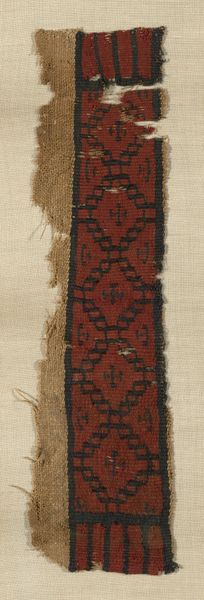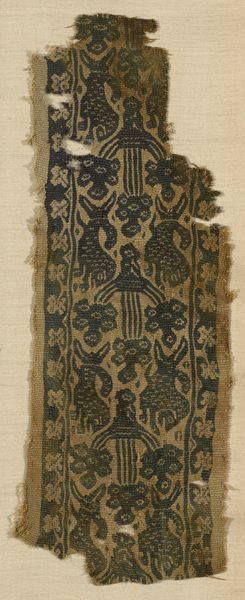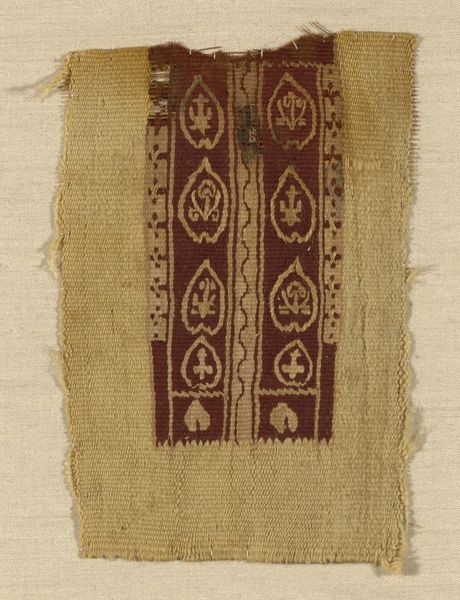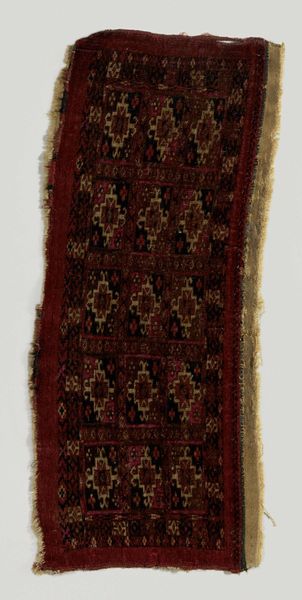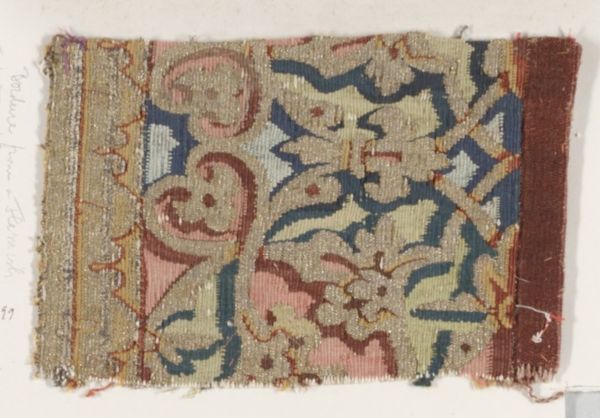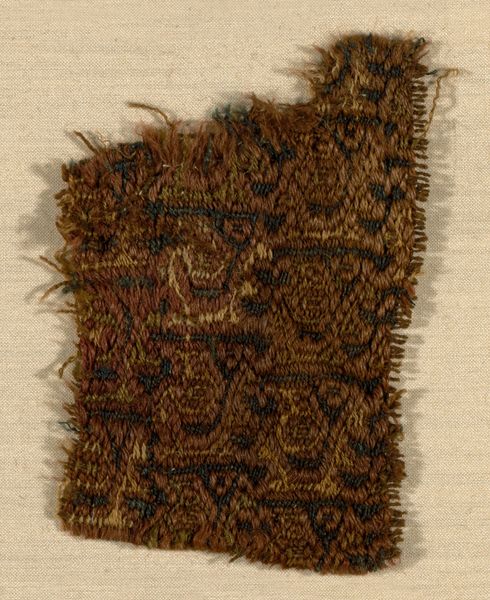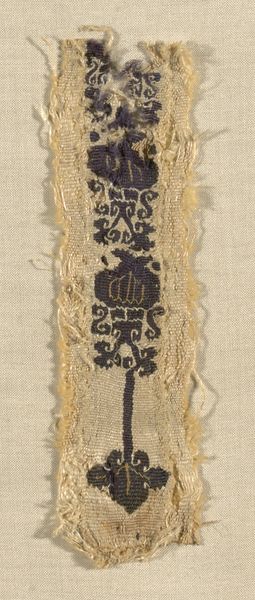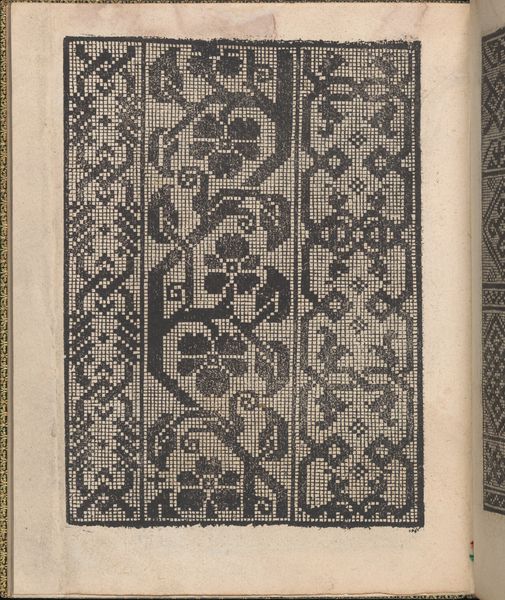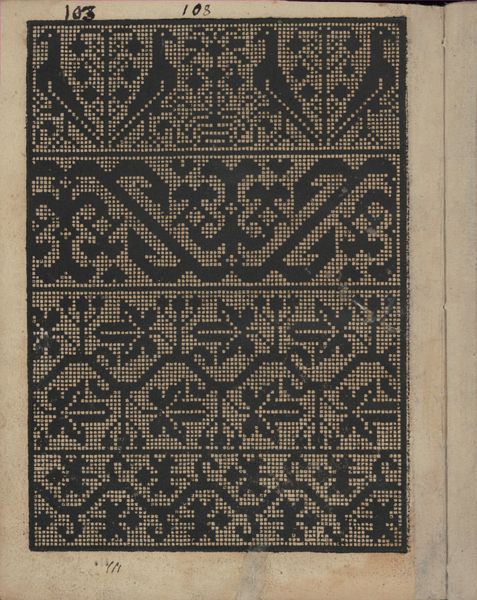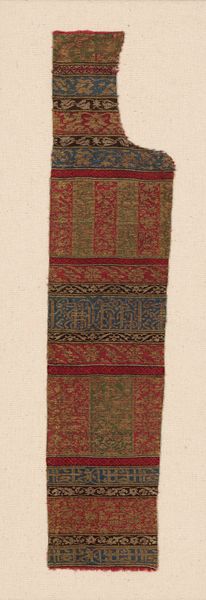
Fragment (Border) Greco–Roman period (30 B.C.–641 A.D.), 4th/5th century
0:00
0:00
fibre-art, weaving, textile
#
fibre-art
#
weaving
#
textile
#
form
#
organic pattern
#
geometric
#
ancient-mediterranean
#
line
#
decorative-art
Dimensions: 27.9 × 6.4 cm (11 × 2 1/2 in.)
Copyright: Public Domain
Curator: This is a fragment of a woven border, dating from the 4th or 5th century during the Greco-Roman period. It is currently held in the collection of the Art Institute of Chicago. Editor: There’s a kind of somber beauty in its muted colors and frayed edges. You can really sense the passage of time. The repetitive, stylized vines make me think about how design carries meaning even in simple forms. Curator: These kinds of textiles were extremely important in late antique societies. Dress was deeply symbolic. Even fragments like this would have visually communicated aspects of status and cultural belonging. We’re probably looking at something that would have adorned a more monumental textile, perhaps a tunic or curtain. Editor: When I look closer, the process itself is fascinating. To think of the weaver, meticulously interlacing threads, probably working within a structured workshop setting. We have this very tactile object carrying this very rich social weight. It brings a completely different perspective to luxury and the art market from this era. Curator: The use of a continuous, almost abstract, vegetal motif speaks to wider artistic trends present throughout the Byzantine empire at that time. Although abstracted, naturalism remains an important element, demonstrating a move away from Classical approaches. I'm curious about what visual narratives or belief systems may be interwoven within the fabric's decorative structure. Editor: I’m also stuck thinking about the labor that created this object. How long did it take? Who did the work? And what kind of knowledge, maybe knowledge now lost to time, was embedded in the handwork of the artisan? Curator: Recovering some of that history involves connecting surviving artworks like this one to records and texts that reveal social structures, power dynamics, and belief systems prevalent at the time of production. This also means museums and galleries have a key role in making connections visible through well researched exhibits and programs. Editor: Exactly! It allows for the reevaluation of "ancient" artistry within a contemporary discussion about production methods. By analyzing such textiles, we can see a complete history woven right into its literal construction. It challenges modern hierarchical artistic categories to think about utility and craftsmanship. Curator: Considering "Fragment (Border)" in light of historical contexts definitely makes us conscious of art’s continuing participation in conversations of influence, tradition and exchange. Editor: And understanding production allows for recognizing artistry as skillful and politically laden work. Examining something seemingly simple as this Fragment teaches about craft and making and illuminates what can be learned from material remains.
Comments
No comments
Be the first to comment and join the conversation on the ultimate creative platform.
